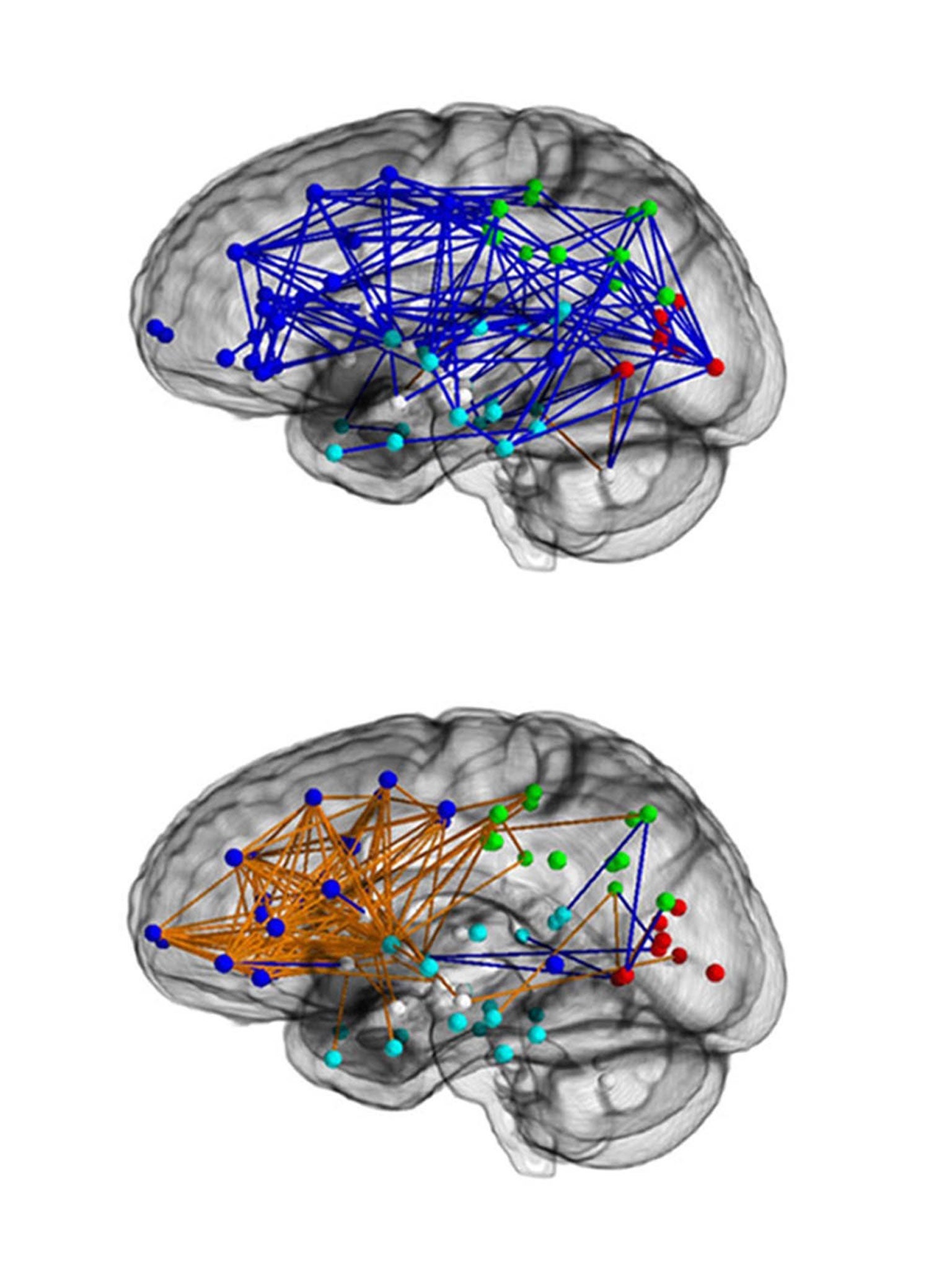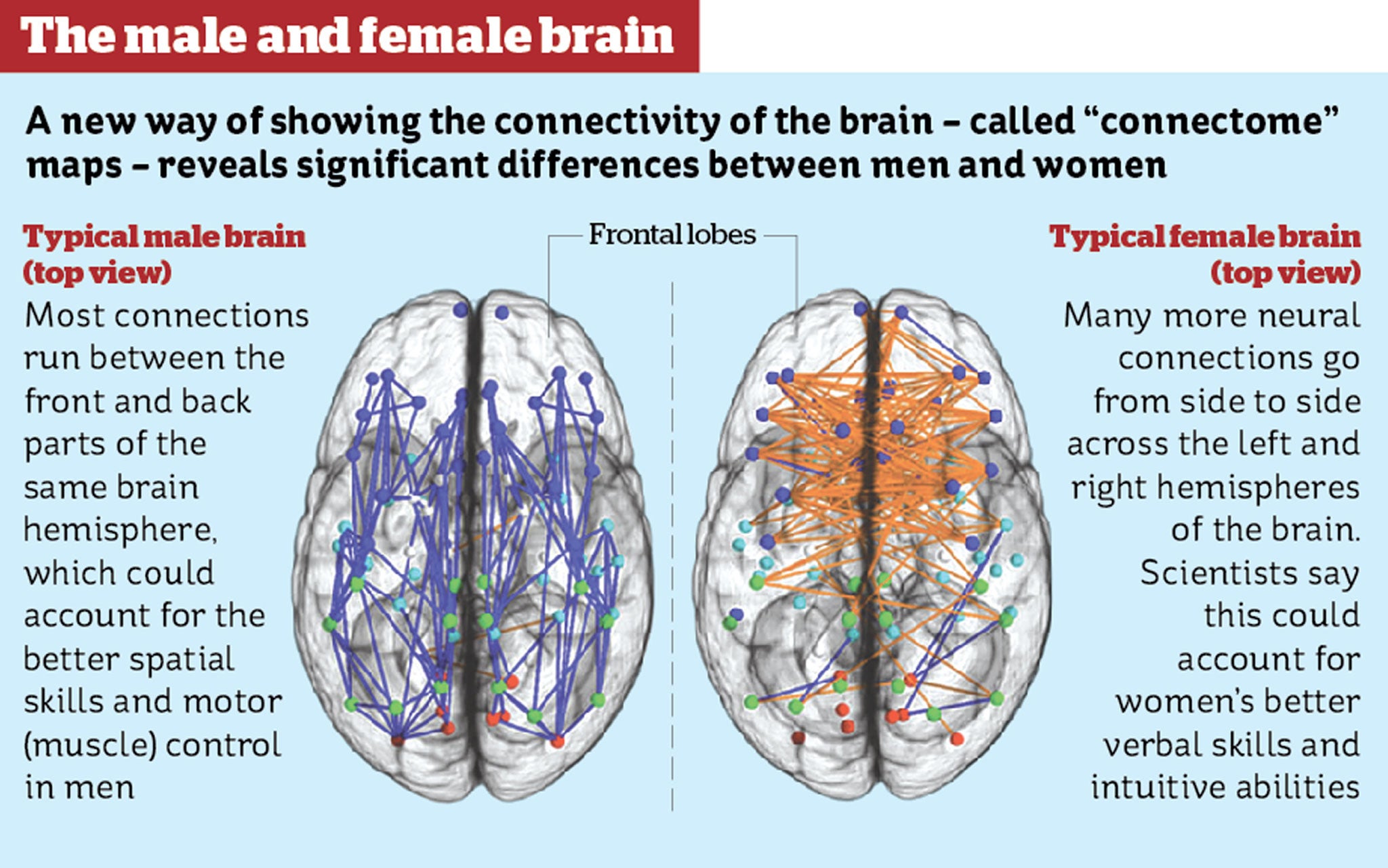The hardwired difference between male and female brains could explain why men are 'better at map reading'
And why women are 'better at remembering a conversation'

Your support helps us to tell the story
From reproductive rights to climate change to Big Tech, The Independent is on the ground when the story is developing. Whether it's investigating the financials of Elon Musk's pro-Trump PAC or producing our latest documentary, 'The A Word', which shines a light on the American women fighting for reproductive rights, we know how important it is to parse out the facts from the messaging.
At such a critical moment in US history, we need reporters on the ground. Your donation allows us to keep sending journalists to speak to both sides of the story.
The Independent is trusted by Americans across the entire political spectrum. And unlike many other quality news outlets, we choose not to lock Americans out of our reporting and analysis with paywalls. We believe quality journalism should be available to everyone, paid for by those who can afford it.
Your support makes all the difference.A pioneering study has shown for the first time that the brains of men and women are wired up differently which could explain some of the stereotypical differences in male and female behaviour, scientists have said.
Researchers found that many of the connections in a typical male brain run between the front and the back of the same side of the brain, whereas in women the connections are more likely to run from side to side between the left and right hemispheres of the brain.
This difference in the way the nerve connections in the brain are “hardwired” occurs during adolescence when many of the secondary sexual characteristics such as facial hair in men and breasts in women develop under the influence of sex hormones, the study found.
The researchers believe the physical differences between the two sexes in the way the brain is hardwired could play an important role in understanding why men are in general better at spatial tasks involving muscle control while women are better at verbal tasks involving memory and intuition.
Psychological testing has consistently indicated a significant difference between the sexes in the ability to perform various mental tasks, with men outperforming women in some tests and women outperforming men in others. Now there seems to be a physical explanation, scientists said.
“These maps show us a stark difference - and complementarity - in the architecture of the human brain that helps to provide a potential neural basis as to why men excel at certain tasks, and women at others,” said Ragini Verma, professor of radiology at the University of Pennsylvania in Philadelphia.
“What we've identified is that, when looked at in groups, there are connections in the brain that are hardwired differently in men and women. Functional tests have already shown than when they carry out certain tasks, men and women engage different parts of the brain,” Professor Verma said.
The research was carried out on 949 individuals - 521 females and 428 males - aged between 8 and 22. The brain differences between the sexes only became apparent after adolescence, the study found.
A special brain-scanning technique called diffusion tensor imaging, which can measure the flow of water along a nerve pathway, established the level of connectivity between nearly 100 regions of the brain, creating a neural map of the brain called the “connectome”, Professor Verma said.
“It tells you whether one region of the brain is physically connected to another part of the brain and you can get significant differences between two populations,” Professor Verma said.
“In women most of the connections go between left and right across the two hemispheres while in men most of the connections go between the front and the back of the brain,” she said.
Because the female connections link the left hemisphere, which is associated with logical thinking, with the right, which is linked with intuition, this could help to explain why women tend to do better than men at intuitive tasks, she added.
“Intuition is thinking without thinking. It's what people call gut feelings. Women tend to be better than men at these kinds of skill which are linked with being good mothers,” Professor Verma said.
Many previous psychological studies have revealed significant differences between the sexes in the ability to perform various cognitive tests.
Men tend to outperform women involving spatial tasks and motor skills - such as map reading - while women tend to better in memory tests, such as remembering words and faces, and social cognition tests, which try to measure empathy and “emotional intelligence”.
A separate study published last month found that the genes expressed in the human brain did so differently in men and women. Post-mortem tests on the brain and spinal cord of 100 individuals showed significant genetic differences between the sexes, which could account for the observed gender differences in neurological disorders, such as autism, according to scientists from University College London.
For instance, one theory of autism, which is affects about five times as many boys as girls, is that it is a manifestation of the “extreme male brain”, which is denoted by a failure to be able to show empathy towards others.
The latest study, published in the Proceedings of the National Academy of Sciences, showed that the differences in the male and female “connectomes” develop during at the same age of onset of the gender differences seen in psychological tests.
The only part of the brain where right-left connectivity was greater in men than in women was in the cerebellum, an evolutionary ancient part of the brain that is linked with motor control.
“It's quite striking how complementary the brains of women and men really are,” said Rubin Gur of Pennsylvania University, a co-author of the study.
“Detailed connectome maps of the brain will not only help us better understand the differences between how men and women think, but it will also give us more insight into the roots of neurological disorders, which are often sex related,” Dr Gur said.

Join our commenting forum
Join thought-provoking conversations, follow other Independent readers and see their replies
Comments